7 single-leg exercises for injury prevention
Add these simple moves to your next gym session

There is an ongoing debate in the strength training world as to which is better: single-leg (unilateral) or double-leg (bilateral) exercises. The argument appears to be equally strong on both sides, but when you apply this to running, single-leg movements do provide some unique benefits, since running is a unilateral action. While there is a place for both strength training protocols in a running program, single-leg movements can help address muscle imbalances and lower your risk for injuries.
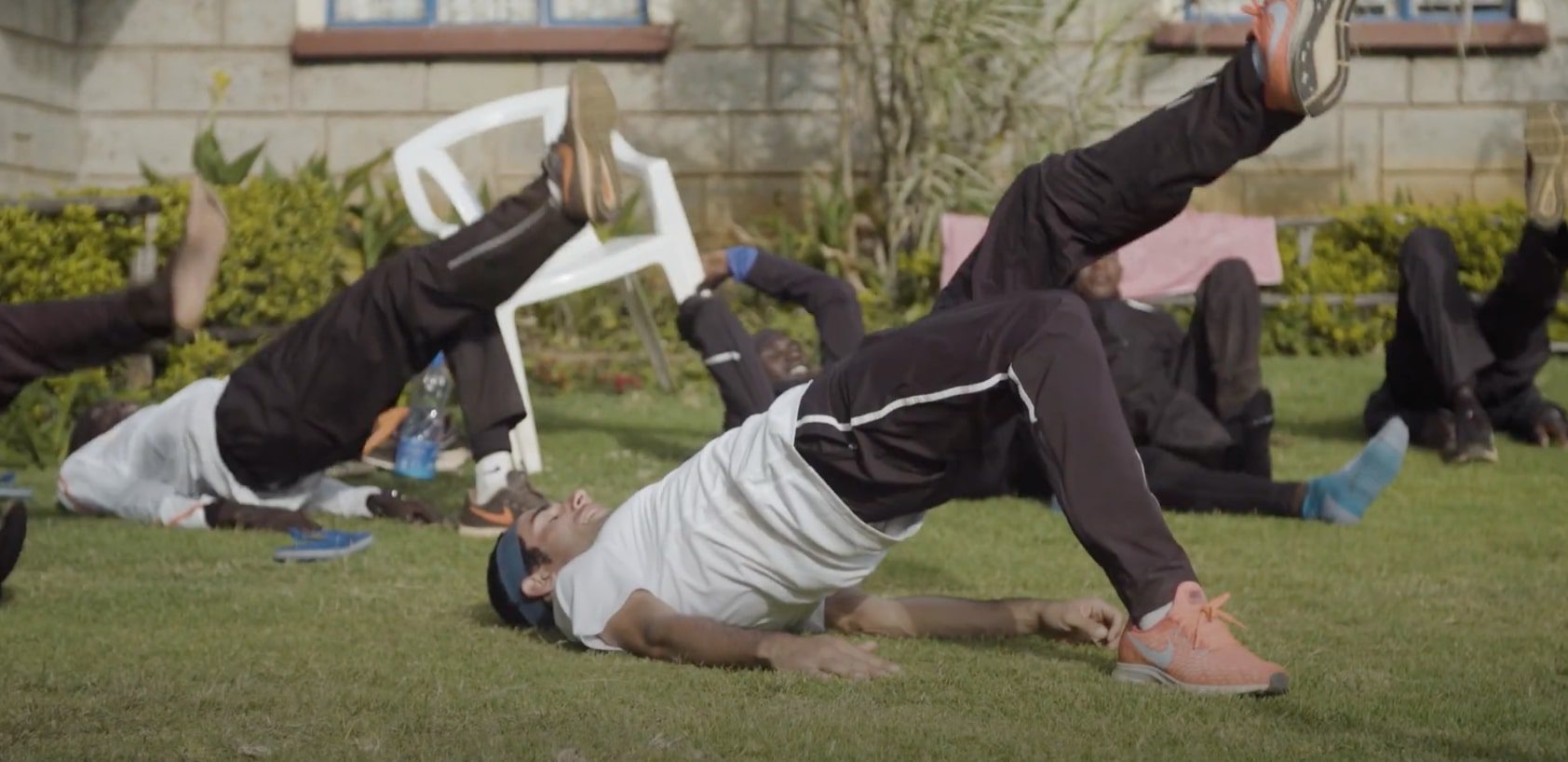
RELATED: Strength training: how much time do you really need to spend in the gym?
The case for single-leg exercises
There are two main reasons runners should strength train: injury prevention and improved running performance. Single-leg exercises accomplish the former very well because training each leg separately can help prevent one side from becoming stronger than the other or help your weaker side catch up. A recent study also showed that when participants did single-leg exercises in an alternating pattern (instead of doing all your reps on one side and all of them on the other), their time to exhaustion improved, indicating that alternating unilateral movements may improve performance for endurance athletes. They admit, however, that more research is needed.
The drawback to single-leg exercises is that they don’t help you produce more force the way double-leg exercises do. Producing more force against the ground is one of the main ways you can run faster, so in this way, single-leg exercises don’t help much.
The bottom line is that both unilateral and bilateral exercises have merits for runners and deserve a spot in your strength-training program, but if when it comes to injury prevention, single-leg exercises do more for you. Check out the movements below and try them in your next gym session.
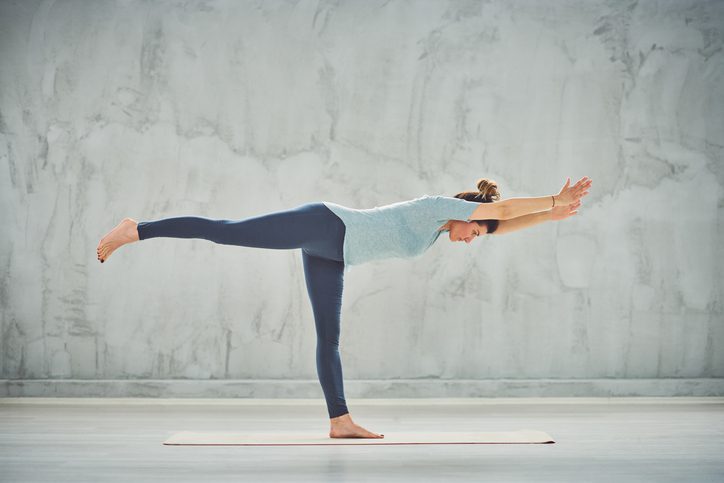
RELATED: At-home strength training: resistance band workout for runners
Single-leg deadlift
Bend at the hip and begin lowering your chest to the ground while standing on one leg, extending the opposite leg behind you until you have a straight line from your head to your back foot that’s parallel to the ground. Squeeze the glute on your supporting leg to return to the standing position. Your supporting leg should be mostly straight with a slight bend in your knee.
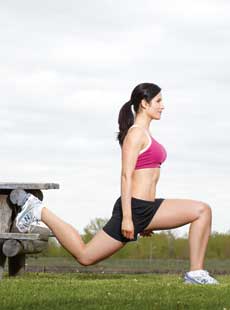
Rear-foot elevated split squat
Place a chair or bench behind you. Place one foot on the chair and keep the opposite foot on the floor so you’re standing on one leg. Squat down on the supporting leg as low as you can go, or until the knee of your back leg grazes the ground, then return to standing.
Single-leg glute bridge
Lie on your back with your feet planted on the floor, hip-width apart. Extend one leg out straight, keeping it in line with the other leg. Tighten your abs and glutes and thrust your hips into the air until you’ve formed a straight line from your shoulders to your foot on the extended leg. Pause, then return to the ground and repeat.
RELATED: 7 glute bridge variations for runners
Single-leg calf raises
Standing on one leg on the edge of a step or bench, lower your heel (of the foot you’re standing on) slightly, then push upward until you’re standing on the front of your foot. Slowly drop back down to the bottom, and repeat.
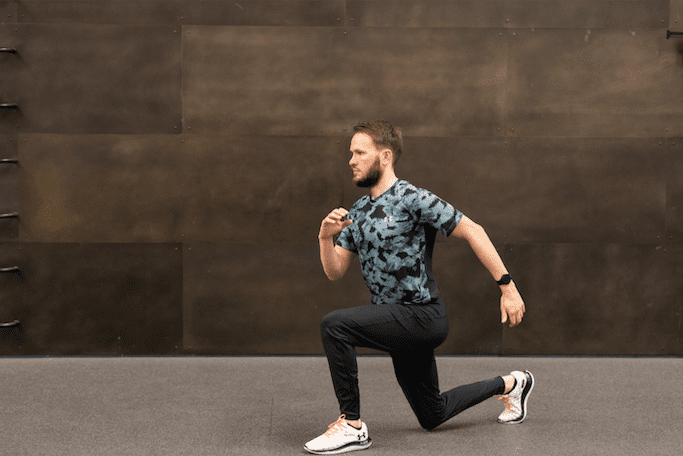
Walking lunges
Staying upright, lunge forward with one leg until your back knee touches the ground, keeping your weight in the heel of your front foot. Push off that heel to stand, bringing your back leg through to take a giant step until your back into the lunge position on the opposite leg, then continue marching forward in this fashion.
Hip hike
Standing on one leg on the side of a step or a bench with your pelvis in a neutral position, drop one hip until it is several inches below your other hip. Thrust your hip upward by squeezing your glute and driving the heel of your supporting leg into the ground.
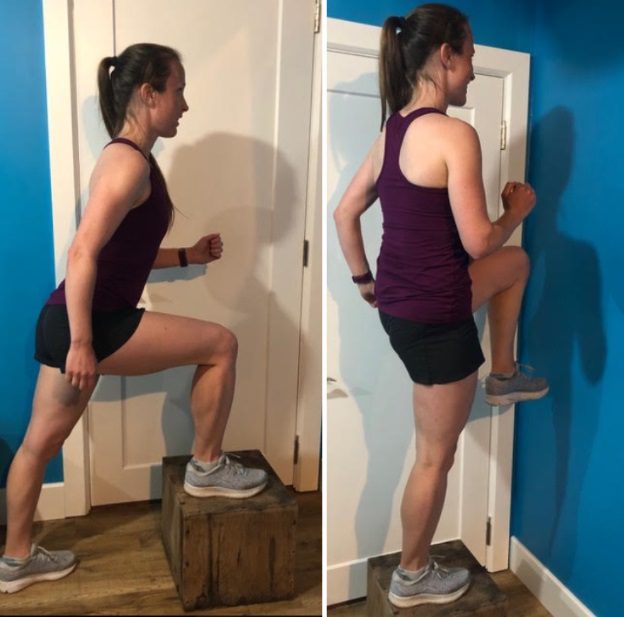
RELATED: Improve your balance to be a better runner
Front and side step-ups
Stand in front of an elevated platform (this should be higher than a regular stair step). Step up with one foot, driving your heel into the platform, then drive your opposite knee up into the air until you’re in a running position with your torso upright. Slowly lower back down to the ground and step off the platform, then repeat. To do a side step-up, simply stand so the platform is next to you, rather than in front of you.


